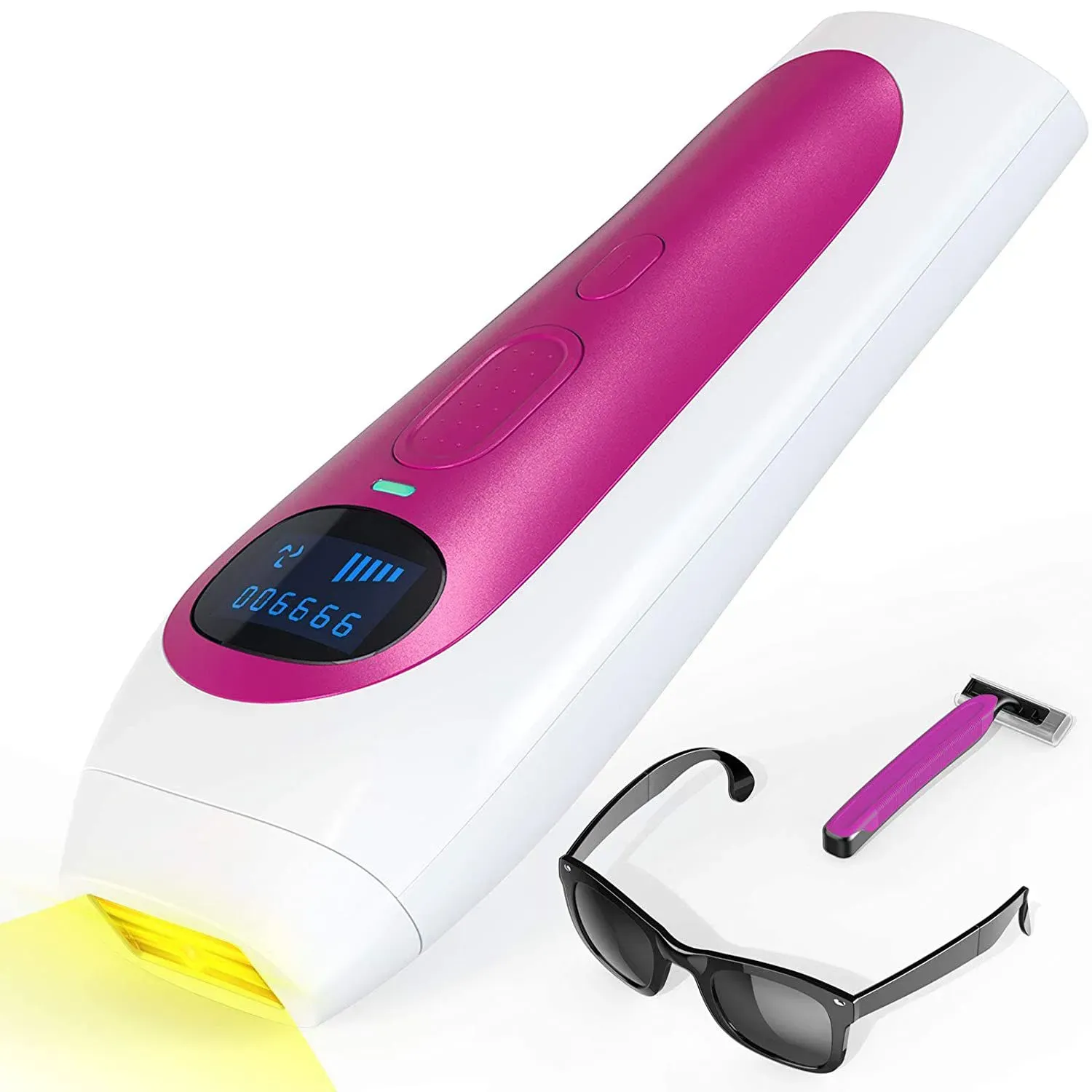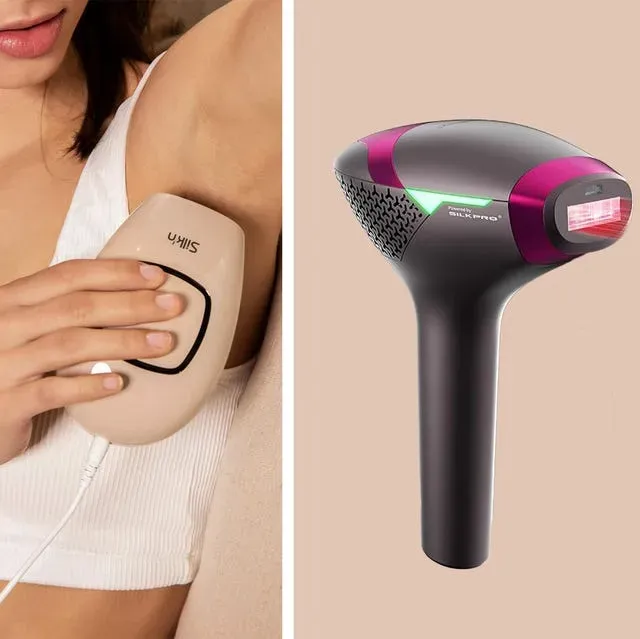Table of Contents
Tired of the endless cycle? Shaving nicks, waxing pain, those awkward in-between stubble days – it's a ritual many of us would happily ditch. The promise of smooth, hair-free skin without constant effort is appealing, which is why the idea of zapping unwanted hair at home has gained traction. Forget booking salon appointments or dealing with the commute. The market is now flooded with devices claiming to offer permanent or long-lasting hair reduction right in your bathroom.
Understanding AtHome Hair Removal Tech

Understanding AtHome Hair Removal Tech
The Science Behind the Smoothness
let's talk about how these little devices actually work. When you're looking into Understanding At-Home Hair Removal Tech, you'll quickly run into two main players: IPL and true laser. Despite what some marketing might suggest, most devices labeled "laser" for home use are actually IPL, or Intense Pulsed Light. Think of IPL like a camera flash, but way stronger and aimed at your skin. It uses a broad spectrum of light wavelengths, sort of scattered, to target the melanin (that's the pigment) in your hair follicle. This light energy gets converted to heat, which damages the follicle and slows down or prevents future hair growth. True home lasers, while less common and often pricier, use a single, focused wavelength of light, more like a precise beam, to target the follicle with greater intensity. Both aim to disable the hair factory, but they do it slightly differently.
Key Factors for Selecting the Best Home Hair Removal Laser

Key Factors for Selecting the Best Home Hair Removal Laser
Your Skin Tone and Hair Color Matter
Alright, so you've got the basic tech down. Now, how do you pick the right one? First off, let's talk about compatibility. This is probably the most crucial factor, and honestly, where a lot of people go wrong. Most at-home devices, especially the IPL ones, work best on light to medium skin tones with dark hair. Why? Because the light targets the melanin. If your skin is very dark, there's a higher risk the device will target the melanin in your skin instead of just the hair, leading to burns or discoloration. If your hair is very light (blonde, red, grey), it doesn't have enough melanin for the light to effectively heat the follicle. Some newer devices claim broader compatibility, like those using Optimal Pulse Technology (OPT) or specific diode lasers, but always check the manufacturer's skin tone chart. Don't skip this step unless you fancy a bad outcome.
Device Features and Flash Counts
Beyond skin and hair type, you need to look at the nitty-gritty of the device itself. How many flashes does it offer? This is essentially the lifespan of the device. A typical full-body treatment takes a few hundred flashes, maybe more depending on how thorough you are and the areas you're covering. Devices often boast hundreds of thousands of flashes, which sounds like a lot, and it usually is enough for multiple treatment cycles over several years. Consider the treatment area – some devices have different head sizes for larger areas like legs and smaller, sensitive spots like the upper lip. Also, check for safety features like skin tone sensors that prevent accidental firing on unsuitable skin tones. Some devices offer different energy levels, which is good for starting low and increasing as you get comfortable.
- Check the skin tone chart provided by the manufacturer.
- Verify the listed flash count and estimate its lifespan for your needs.
- Look for safety features like built-in skin tone sensors.
- Consider devices with adjustable energy levels.
- See if different head sizes are available for varied treatment areas.
Treatment Area, Pain, and Price Tag
Where are you planning to use this thing? Legs, underarms, bikini line, face? Some devices are better suited for certain areas due to head size or intensity. Pain tolerance is another big one. While often less painful than waxing or professional laser, you'll still feel a sensation – sometimes described as a rubber band snap or a warm prickle. Devices with cooling features can help mitigate this. Finally, the price. These aren't cheap, often ranging from a couple hundred to over a thousand dollars. Think of it as an investment compared to years of salon visits, but make sure the features and compatibility justify the cost for you. Doing your homework at sites like hairawaybylaser.com helps you weigh the options and avoid buyer's remorse.
Reviews: Which Devices Offer the Best Home Hair Removal Laser Experience?

Reviews: Which Devices Offer the Best Home Hair Removal Laser Experience?
Popular Contenders in the Home Hair Removal Ring
Alright, navigating the world of home hair removal gadgets can feel like dating – lots of options, varying promises, and you really hope you don't end up with a dud. When people talk about the *best home hair removal laser*, the Braun Silk Expert Pro line often pops up. It's an IPL device, not a true laser, but it's popular for a reason. It boasts a skin tone sensor that automatically adjusts the intensity, which is a nice safety net if you're nervous about settings. Users often report it's relatively fast for treating larger areas like legs. It works by flashing light onto the skin, targeting the melanin in darker hair. So, if you have fair to medium skin and dark hair, this one is frequently cited as effective.
Exploring Other Options and Features
Beyond the big names, you'll find devices like the Ulike Air 3, which puts a big emphasis on comfort with its built-in cooling feature. This is a game-changer for some, making the treatment feel less like a rubber band snap and more like... well, less painful. It's another IPL device, and like most, works best on specific skin and hair types. Then there are devices that claim to tackle slightly darker skin tones, though you still need to be cautious and check their specific compatibility charts rigorously. True home lasers, like Tria, are less common and usually slower for treatments but might offer a different experience. It really comes down to what features matter most to you – speed, comfort, or perhaps a slightly different technology approach.
- Does the device have a skin tone sensor? This is a key safety feature.
- How many flashes does it promise? Does that lifespan match your expected usage?
- Are there different intensity levels? Good for starting low and increasing.
- Does it have a cooling feature? Can significantly impact comfort.
- What do user reviews say about consistency and long-term results?
Setting Realistic Expectations from Reviews
Now, reading reviews for the *best home hair removal laser* can be a mixed bag. You'll see glowing testimonials alongside frustrated complaints. Remember, these devices cause hair *reduction*, not necessarily permanent removal of every single hair follicle forever. Results take time, often requiring multiple sessions over several months, followed by maintenance treatments. Don't expect perfectly smooth skin overnight. Patchy results are common, especially if you miss spots or aren't consistent. Pay attention to reviews from people with similar skin and hair characteristics to yours. And be wary of reviews that sound too good to be true or promise instantaneous, flawless results. It's a commitment, not a magic wand.
Using Your Best Home Hair Removal Laser Safely

Using Your Best Home Hair Removal Laser Safely
Prepping Your Skin for Treatment
so you've unboxed your shiny new device, maybe even the one you decided was the best home hair removal laser for you. Before you start zapping away, proper preparation is key. This isn't like slapping on some lotion. First and foremost, your skin needs to be clean and dry. No lotions, no oils, no makeup in the treatment area. Shave the area you plan to treat beforehand. The device targets the pigment in the hair follicle, and having stubble above the skin's surface can cause the light energy to scatter, reducing effectiveness and potentially irritating your skin. Don't wax or pluck – you need the hair follicle intact for the treatment to work.
Patch testing is non-negotiable. Seriously. Even if the device has a skin tone sensor, do a small test patch in an inconspicuous area first. Wait 24-48 hours to see how your skin reacts. Redness or slight warmth is normal, but intense pain, blistering, or significant discoloration is a sign this device isn't for you or you're using it incorrectly. Follow the device's instructions for energy levels. Starting low and gradually increasing is a smart move, especially if you have sensitive skin.
During and After Your Session
When you're actually using the device, hold it firmly against your skin to ensure proper contact. Most devices won't flash unless they sense full contact. Move the device systematically across the treatment area, overlapping slightly with each pulse to avoid missed spots. Avoid treating the same area multiple times in one session – that's just asking for irritation. Sensitive areas might feel more intense, so take your time and breathe through it. It's not a race.
Immediately after treatment, your skin might be slightly red or feel warm, kind of like a mild sunburn. This is usually temporary. Avoid hot showers, saunas, or intense exercise for at least 24 hours. Your skin is a bit sensitive right now. Apply a soothing, non-comedogenic moisturizer to keep the skin hydrated. Skip any products with harsh chemicals, exfoliants, or retinoids in the treated area for a few days. And for the love of smooth skin, stay out of the sun! Tanned skin is more susceptible to adverse reactions with these devices. If you absolutely must be in the sun, cover the treated area or use a high SPF sunscreen.
- Shave the area *before* treatment.
- Ensure skin is clean and dry.
- Always perform a patch test.
- Start with the lowest energy setting.
- Hold the device firmly against the skin.
- Move systematically, avoiding multiple passes on the same spot.
- Avoid hot showers, saunas, and sun exposure post-treatment.
- Apply a soothing moisturizer.
Achieving Lasting Smoothness with Your Best Home Hair Removal Laser

Achieving Lasting Smoothness with Your Best Home Hair Removal Laser
Consistency is the Unsung Hero
You bought the device, you prepped your skin, you did your first session. Great. But if you think one zap and you're done, you're in for a hairy surprise. Achieving Lasting Smoothness with Your Best Home Hair Removal Laser is less about a single miracle treatment and more about sticking to a schedule. Hair grows in cycles. These devices are most effective when the hair is in the active growth phase, which isn't all the hair at any given time. That's why manufacturers recommend a series of initial treatments, typically every one to two weeks for the first month or two, then spacing them out. Missing sessions means you're missing hair in its prime zapping phase. It's like trying to clear a garden by only pulling weeds every other month – you'll never quite get ahead.
Maintenance Isn't Just for Cars
Even after you've completed the initial treatment phase and are seeing significant reduction, your job isn't entirely over. Hair follicles are stubborn little things. Some might just be stunned, not completely destroyed. Hormonal changes, time, or just plain defiance can cause some regrowth. This is where maintenance comes in. Think of it as checking in with your skin every month or two, or whenever you notice a few stragglers popping up. A quick touch-up session targets these new hairs before they get established. Skipping maintenance after putting in the initial effort is like painting a fence and then never touching it up – eventually, the rust and peeling will return. It's a minor commitment to protect a bigger investment.
So, what does a typical maintenance schedule look like?
- Initial Phase: Treat every 1-2 weeks for 4-6 sessions.
- Reduction Phase: Treat every 2-4 weeks as growth slows.
- Maintenance Phase: Treat every 1-3 months or as needed.
Keep track of your sessions. A simple note on your phone or a calendar reminder can make a big difference in keeping you on track.
Addressing Stubborn Spots and Expectations
Even with the best home hair removal laser and a diligent schedule, you might encounter stubborn patches. Areas like the bikini line or underarms often have denser, coarser hair and might require more sessions or simply yield less complete results than, say, legs. This isn't necessarily a fault of the device, but rather the nature of the hair itself. Also, manage your expectations. While some people achieve near-total hair clearance, others get significant reduction that makes shaving or other methods much less frequent. Don't get discouraged if a few hairs persist. It's about making your life easier, not necessarily achieving a perfectly airbrushed finish 24/7. If a specific area is particularly resistant after consistent treatment, it might be worth consulting a professional, but for most folks, consistency with the device you chose will get you pretty darn close to that smooth ideal.
Wrapping Up Your Search for the Best Home Hair Removal Laser
Navigating the options for at-home hair removal can feel like a maze, with promises of permanent smoothness around every corner. We've looked at how these devices work, the crucial factors to consider like skin tone and hair color, and touched on what some popular models offer. The reality is, there's no single magic wand for everyone. The "best home hair removal laser" is ultimately the one that fits your specific skin type, hair characteristics, budget, and patience level. Results take time and consistency. Don't expect overnight miracles, but with careful selection and diligent use, you can certainly reduce unwanted hair and lessen your reliance on traditional methods. Do your research, manage your expectations, and choose a device that makes sense for your routine.
